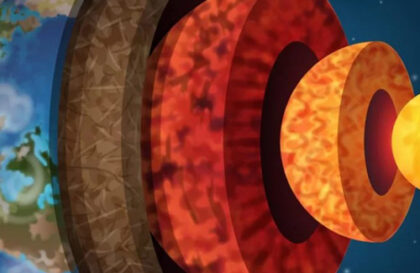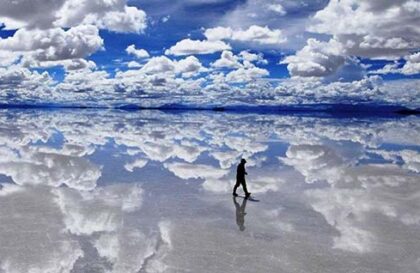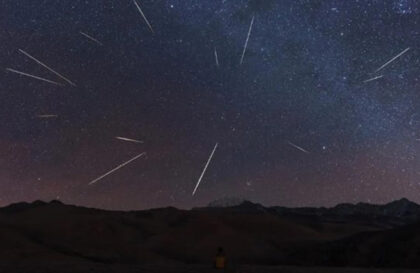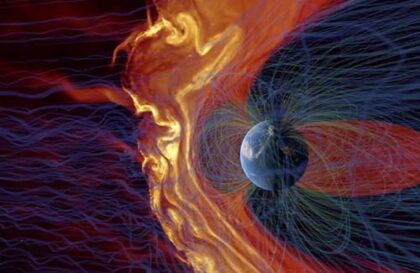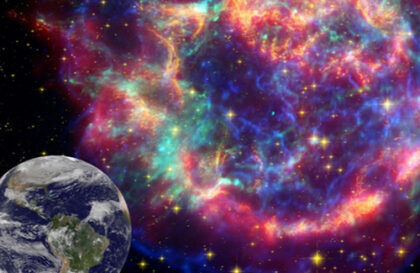Moving in space
The reason why the Earth continues its endless rotation, like the endless rotation of a child’s carousel wheel, is that there are no significant forces capable of stopping this movement. If you’ve ever spun a child’s carousel and then let it go, you know that it eventually stops. This occurs because air and friction from the surface of the pad prevent further rotation.
The Earth rotates in space, where there is practically no substance that can slow it down.
However, there is one force that influences the rotation of the Earth, and that is the Moon. The motion of the side of the Earth facing the Moon is not balanced by gravity, nor is the side facing away from the Moon. This slight imbalance creates tides in the oceans, which rise and fall as the Earth rotates. These changes in the oceans slow down the Earth’s rotation. As a result, Earth’s days become longer by one second approximately every 50,000 years.
There are also rocky tides on Earth that are affected by the Moon’s gravity. However, unlike water, rock formations are less susceptible to deformation, so tidal bulges in rocks are less noticeable. Rocks slowly bend and flow, and as the Earth rotates, these rocky tidal bulges outpace the gravitational force generated by the Moon. This displacement creates a torque that acts on the Moon.
Torques can slow down or speed up the rotation of rotating objects. When the Moon first formed over 4 billion years ago, it rotated much faster, but over time tidal influences slowed its rotation to the state we see it in today, tidally locked to the Earth.
Even a colossal collision with another planet is unable to stop the Earth’s rotation. Most likely, the Earth’s rotation would change rather than stop completely.
Nevertheless, exoplanets have already been discovered with one side facing their star. They do not rotate around their axis.
Planet of Eternal Day
A tidally locked planet. A scorched desert on one side, a frozen eternal night on the other. Between is a forever sunrise, a ribbon of life
Tidal locking is a phenomenon in which some planets always face one side of their star, resulting in constant day on one side and night on the other. This is due to gravitational interactions between the planet and its star, which slow the planet’s rotation until it matches its orbit.
The Moon is a good example of tidal locking because it always faces the Earth with the same face. Other moons in our solar system are also tidally locked to their home planets, such as Jupiter’s moon Io and Saturn’s moon Enceladus.
This phenomenon is also common among exoplanets, especially those that are close to their stars, where the gravitational influence is stronger.
For example, the exoplanet Proxima Centauri b, discovered in 2016 and orbiting Proxima Centauri, is almost certainly tidally locked.
All seven planets of the TRAPPIST-1 star system rotate synchronously, that is, they are always turned to the star with one side, just as the Moon is always turned with one side to the Earth
The planets of the TRAPPIST-1 system, several of which appear in this illustration, may all be tidally locked to their host star. Credit: European Southern Observatory/M. Kornmesser
And yet she stopped
At the Earth’s equator, the rotation speed reaches about 1000 miles per hour, but we do not feel this movement. Imagine the planet suddenly stopping: everything on its surface – people, houses, trees – would instantly move east at hundreds of miles per hour. High-speed atmospheric winds, maintaining almost the same speed, will “clean” the surface.
If the Earth stopped rotating on its axis. This would cause radical differences in temperature on different sides of the Earth. These temperature fluctuations would generate powerful winds, pushing warm air onto the cold night side of the Earth and carrying heat from the equator to the poles. On a rotating Earth, this does not happen due to the Coriolis effect, which deflects the winds. The result could be huge wind vortices stretching hundreds of miles across the planet.
The Earth’s core, made of molten iron, creates a magnetic field around our planet, protecting us from dangerous solar and cosmic radiation. This magnetic field creates spectacular auroras.
If the Earth were to lose its magnetic field, all life on the planet would be vulnerable to this radiation.
Some species of birds use magnetic fields to navigate, so without the Earth’s rotation it would be much more difficult for them to navigate.
Moreover, the rotation of the Earth creates a night sky that changes over time, including the rising and setting of stars and the appearance of different constellations in different seasons.
The absence of a traditional 24-hour day would affect biological cycles on Earth, including sleep and wakefulness, as they rely heavily on the cycle of day and night driven by sunlight. Many living organisms, including plants and animals, also rely on these cycles for their daily lives, and changes in them can disrupt their normal behavior.
The Earth is unlikely to ever be tidally locked to the Sun—we’re too far away for that to happen. And although our planet’s rotation is slowing down a little (each day gets longer by about 1.7 milliseconds), our planet should never stop spinning completely.
Image credit:
https://wallpaperaccess.com
https://www.reddit.com
https://eos.org
https://www.sciencefocus.com

